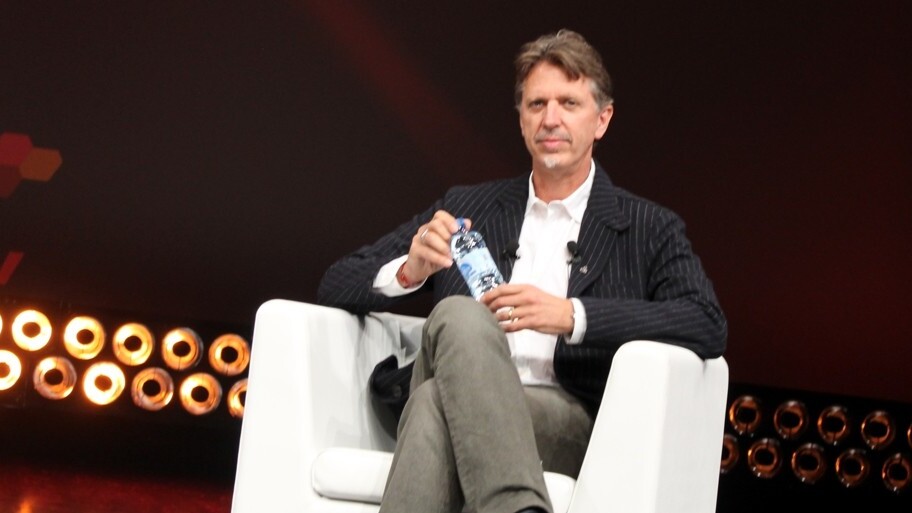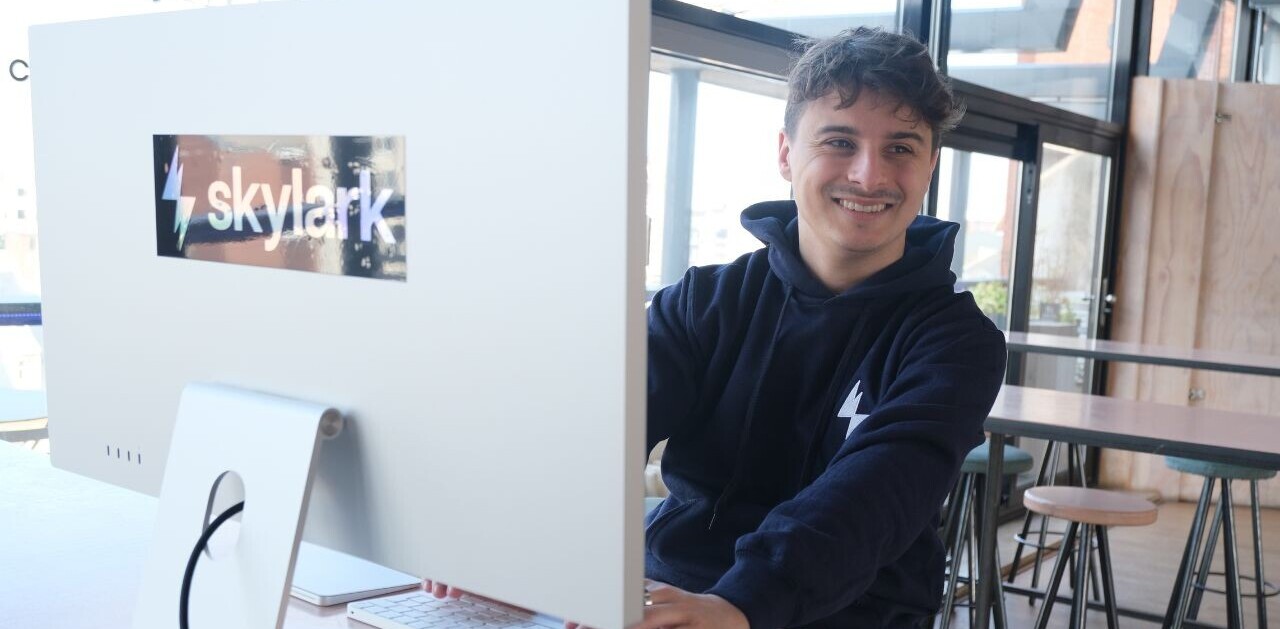
For TV addicts the world over Tim Kring likely requires little introduction. For the benefit of the more occasional couch potato among you, however, Kring is the brains behind Heroes, Crossing Jordan, Conspiracy for Good, Touch and Daybreak.
Last month, it was revealed that Kring was working on an all-new conspiracy drama called The Drake Equation, which will feature an online gaming element. And at MIPTV in Cannes today, Kring took to the stage to talk about the shift TV and narrative is currently experience, and it’s a far cry from the industry he worked in as a writer on the likes of Knight Rider, way back in 1986. He also worked on the screenplay for Teen Wolf Too, as a quirky aside here, and a number of other TV movies.

“For any TV writer looking to sell their work back then, there was three buyers,” says Kring. “Nobody moved to Hollywood to work in TV, they moved to work in features. And ended up getting work in TV.”
Crossing Jordan
Without dwelling too long on the various TV-based works Kring has been involved in over the years, a major turning point in his career came with Crossing Jordan, a crime drama that kicked off on NBC in 2001, representing his first full commissioned show. But just as it was about to air, the 9/11 terrorist atrocities happened – and he says this proved to be a big turning point in his career.
“I remember being really struck by the contrast of this make-believe world that we were creating with actors, sets, scripts and so on,” says Kring. “It was all so…strange and phony in contrast with this genuine tragedy. I started to really want to say something. I wrote one episode of Crossing Jordan, which featured a daisy-chain of events that connected seemingly unconnected people. They were all linked by very random things.”
So, it was this one idea, way back in the early noughties, that helped set Kring down the path of ‘inteconnectivity’ – how people’s lives are reflected on one another, even if they don’t seem directly related. “That’s something that anybody who’s seen my work for the twelve years since will notice,” he says. “And I wanted to use this interconnectivity to try and create some positive changes.”
This happened to coincide when audiences started watching TV in a very different way too, with the Internet shaking up the TV and film industry. “Until then, there was really only a one-way street between me and the audience, I actually had no real realationship with my audience,” says Kring. “I started to realize that ratings were slipping, and audiences were fragmenting. So the next show I wanted to create, I wanted to do something not only more around this concept of interconnectivity, but I wanted to actually have people connect with the show more. And that’s something we were able to do with Heroes.”
Heroes
The first of four seasons of Heroes aired on NBC in 2006, and it’s fair to say it proved a hit. Besides the underlying concept – ordinary people with extraordinary super-human powers – the narrative was notable too, and followed an almost comic book-style structure. Multiple narratives intertwining with each other in a very unusual way.
Although the Web was no spring chicken by the time Heroes launched, the show did jump on the burgeoning online media bandwagon. Indeed, NBC launched Heroes 360 Experience (later renamed as ‘Heroes Evolutions’), which was an online extension to the TV show.
While the broadcasts adhered to a more traditional approach, the online element gave fans insight into the show’s underlying mythology. There were interactive websites, original Web content and a mobile game too. Heroes capitalized on its offline popularity by pushing out into the wider online sphere, and it worked.
“We created this huge cross-platform show that allowed people to access content from these new, emerging platforms,” says Kring.
“The ultimate role of the ancillary, extensions to the show, were really about promotion and marketing,” he adds. “But what we realized was it was actually a great way to take a story that we wanted to put out in the world, and engage with people.”
With Heroes, Kring says they created a new genre of show, one that let them connect with audiences in a very powerful way. “It was in dealing with this audience in a dynamic way that got me to realize that there might be a way to take a story and roll it out into the real world too,” he says.
Indeed, out of the fictional world of Heroes came the Conspiracy For Good
Conspiracy For Good
Sponsored by Nokia, Conspiracy For Good kicked off back in the summer of 2010. The audience played a part in the narrative too, and they were invited to join in and help direct the action by solving numerous puzzles across different various channels.
From the main online hub, viewers/players were directed to videos on YouTube, Twitter channels, documents, and encouraged to go out into the physical streets of London. Alongside the actors, users were asked to join a cause to fight for social and environmental justice against a greedy mega corporation. It was pretty innovative for the time, when Twitter was perhaps still largely seen (whether it was true or not) as a place for sharing what you had for breakfast (oh, the cliche…).
“It was an amazing project,” says Kring, “we had 130 people working in five countries, and it was a very complicated project to do because none of us had ever done anything like this before. There was no template for it.
“But it had this very powerful effect on people who were involved in it,” he continues. “I think there was this realization that narrative and storytelling is a very powerful tool to get people to come out of their homes to do something.”
The Conspiracy For Good was Kring’s first proper foray into sponsored content, something he says enabled him to create some “pretty powerful stuff”, and is proving to be a great way for brands to create a narrative with its (potential) audience.
The online fervency driven by the likes of the Conspiracy For Good, can lead brands to garner millions more follows/likes on social. Plus, it’s adapting to more modern ways of consuming media, which may ultimately lead to the demise of traditional TV advertising as we know it.
“I think the 30-second ad slot is becoming a problem for television – you never know who’s watching, and it’s not very targeted,” says Kring.
Touch and Daybreak
Following the launch of Touch on Fox last summer, Kring created another online drama series, Daybreak, that promotes ‘reveals’ how AT&T’s technology “helps unlock the immersive and engaging mystery that connects us all.” From AT&T’s perspective, it was designed to create engagement with potential customers, while from Kring’s perspective it was about building on Touch’s success with a Web spin-off series, by digging deeper into the show’s underlying narratives.
As we’ve seen with Kring’s efforts over the past seven years or so, narratives can be both linear and non-linear – and they can be platform-specific too. Viewers watching TV will experience one thing, while those wishing to invest more time in their favorite shows can continue long after an episode has aired, through their mobile, on the Web and, as we’ve seen, in the physical world.
With Kring currently executive producing The Drake Equation, which centers on the discovery of a strange signal from the farthest reaches of space, his increasingly-familiar digital footprint will be evident for all to see. Indeed, it will include a “real-time digital narrative using social media and interactive gaming,” running simultaneously to the series. It will be interesting to see how this actually pans out.
Meanwhile, you can follow all our coverage from MIPTV and MIPCube here.
Get the TNW newsletter
Get the most important tech news in your inbox each week.




